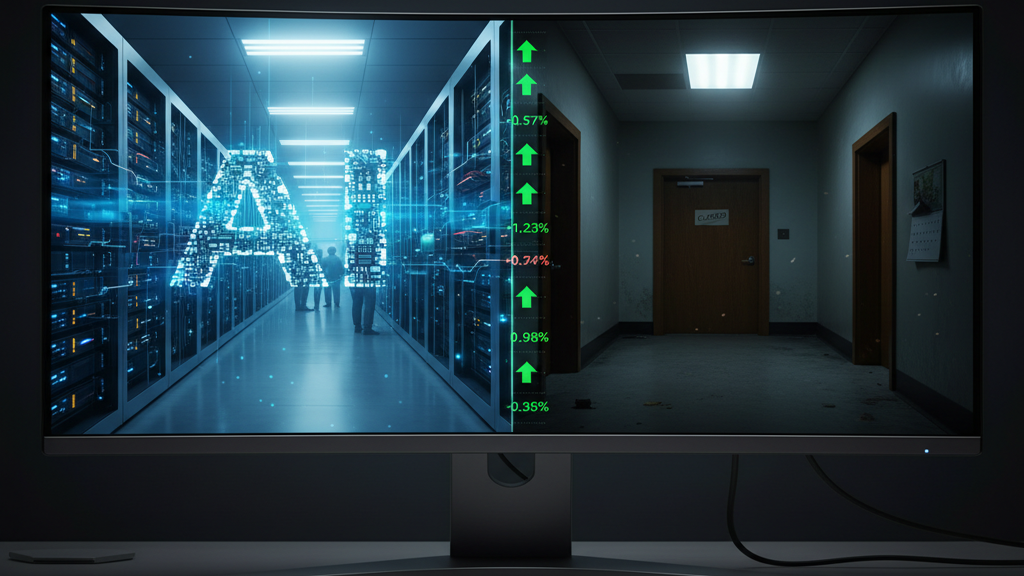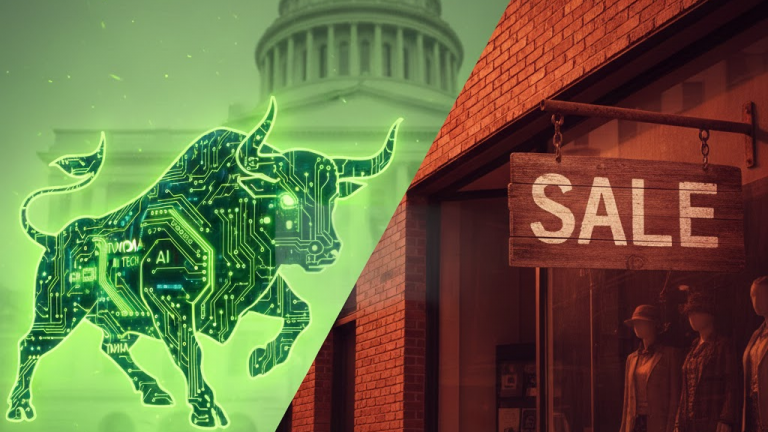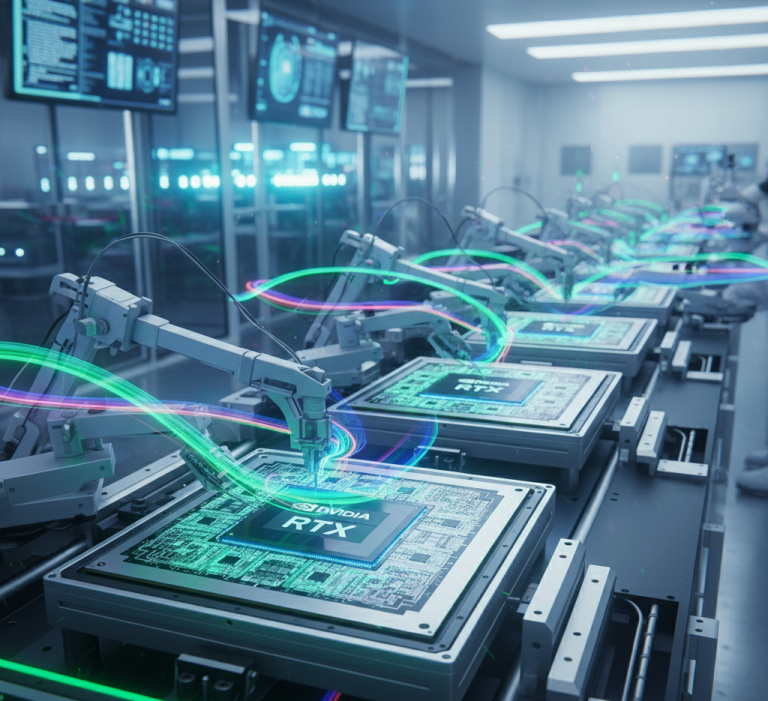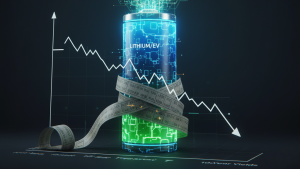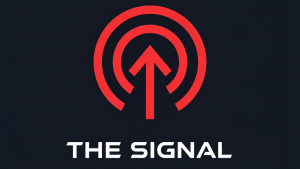The Closing Bell – Thursday, October 2, 2025
Summary (TL;DR)
The bottom line for anyone watching the markets is that this week’s trading action showed a clear divergence: AI-fueled enthusiasm in the technology sector is successfully overriding broader economic and political anxiety. Despite a U.S. government shutdown that has created a “data vacuum” and weak signs from private sector employment, the major U.S. indexes—the S&P 500 and Nasdaq—extended their record-breaking run, primarily on the strength of AI-related stocks. For investors, this signals that the powerful narrative of high-growth technology remains the dominant force, keeping the market resilient even as a slowing job market strengthens the case for future interest rate cuts from the Federal Reserve.
What Happened?
U.S. equity markets finished mixed but resilient on Thursday, following another day where the S&P 500 and Nasdaq Composite indices touched record highs, extending a multi-day streak. The core drivers for the upside were a handful of mega-cap technology stocks following news of a significant OpenAI share sale and new partnerships. This AI enthusiasm overshadowed the ongoing U.S. government shutdown, which has begun to impact the release of key economic data, including the crucial weekly unemployment claims report. Concurrently, new data from the ADP Research Institute, released on Wednesday, indicated that the private sector shed 32,000 jobs in September, a surprise contraction that analysts suggest is reinforcing the market’s expectation for the Federal Reserve to continue cutting interest rates.
Why It Matters?
Coming into this week, all eyes were on the U.S. labor market, with investors needing to see signs of cooling to justify the Federal Reserve’s expected interest rate cuts, but not so much cooling that it signaled a recession. Wednesday’s ADP private payroll data, which showed a loss of jobs instead of the expected growth, was a significant development. This data—while not as authoritative as the delayed government jobs report—intensifies the belief that the economy is decelerating, which the market interprets as favorable for rate cuts.
The political backdrop, the government shutdown, matters because it introduces a high degree of uncertainty and creates a “data vacuum,” delaying reports like weekly jobless claims and potentially Friday’s monthly Non-Farm Payrolls report. This forces investors to rely on alternative, less comprehensive data sources, adding volatility. However, the market’s continued upward trajectory, especially in tech, suggests that the prospect of lower interest rates and the compelling growth story of Artificial Intelligence are collectively viewed as more powerful than the immediate concerns about political risk or economic slowdown.
The Debate (The Bull vs. Bear Case)

The Bull Case (The Optimistic View): On one hand, optimists believe this rally is fully justified by two powerful trends: a thriving technology sector and an accommodating Federal Reserve. The enthusiasm generated by the Artificial Intelligence (AI) boom, highlighted by OpenAI’s reported share sale at a $500 billion valuation and related chip-sector partnerships, is seen as a legitimate, game-changing fundamental driver.
Analysts at Scope Markets suggest that the weak private-sector jobs data “emboldens calls for the Fed to ease rates in the months ahead,” with the market pricing in nearly a 99% chance of a Fed rate cut this month. This environment of slowing labor data, high consumer spending, and potential rate cuts creates a “Goldilocks” scenario where economic momentum is sustained by discretionary income, according to commentary synthesized by Edward Jones.

The Bear Case (The Cautious View): On the other hand, cautious voices point to market overextension and mounting risks. The main concerns are the U.S. government shutdown—which, while historically having a limited impact, could create volatility if prolonged—and the possibility that the recent rally has run “too far, too fast.” A report from Charles Schwab notes that the S&P 500’s Relative Strength Index (RSI), a measure of momentum, has been at elevated levels.
This raises technical concerns about a potential near-term pullback as investors may look to take profits after a significant upward run. Furthermore, the reliance on unofficial or survey-based data during the shutdown-induced “data vacuum” increases the risk of being blindsided by subsequent, higher-impact official reports once they are released. The drop in oil prices to a four-month low also signals potential global oversupply concerns, which could indicate weaker overall economic demand.
By the Numbers (Key Data & Metrics)
- Dow Jones Industrial Average (DJIA): Closed at 46,519.72 (Up $78.62)
- S&P 500 Index: Closed at 6,715.35 (Up $4.15)
- NASDAQ Composite Index: Closed at 22,844.05 (Up $88.89)
- ADP Private Payrolls (September): -32,000 jobs
Disclaimer: This article is for informational purposes only and does not constitute financial, investment, or legal advice. The information provided is a synthesis of publicly available data and expert analysis and should not be considered a recommendation to buy or sell any security. Investing in the stock market involves risk, including the possible loss of principal. Past performance is not indicative of future results. Readers should consult with a qualified financial advisor to determine an investment strategy that is suitable for their own personal financial situation and risk tolerance.
Sources
What part of the current market environment, the AI rally, the labor data, or the government shutdown do you find most confusing or significant?






